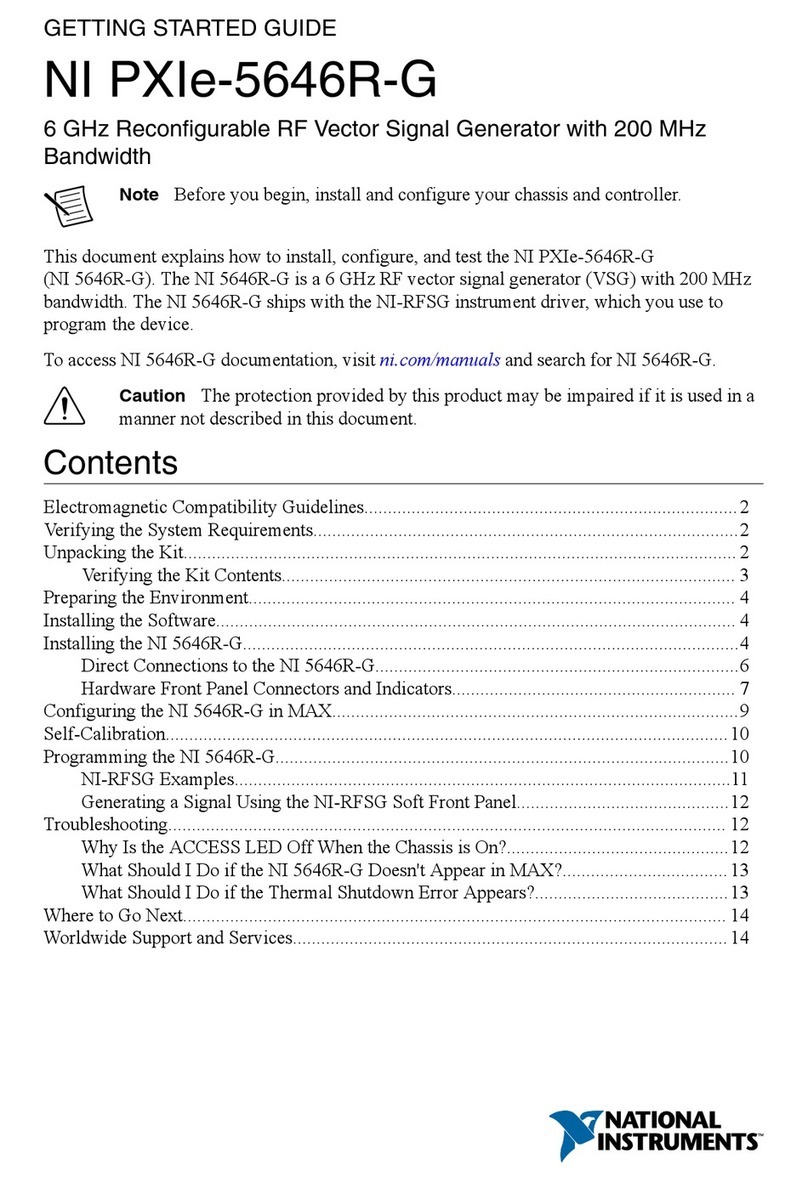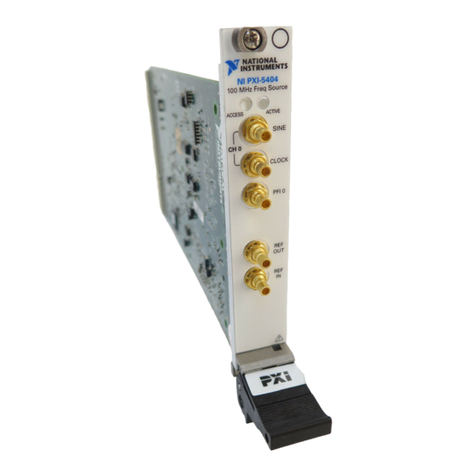CALIBRATION PROCEDURE
PXIe-5413
PXIe, 20 MHz Bandwidth, 16-Bit PXI Waveform Generator
This document contains the verification and adjustment procedures for the PXIe-5413. Refer
to ni.com/calibration for more information about calibration solutions.
Contents
Required Software.....................................................................................................................1
Related Documentation.............................................................................................................2
Test Equipment..........................................................................................................................2
Test Conditions..........................................................................................................................4
Password................................................................................................................................... 5
Calibration Interval................................................................................................................... 5
As-Found and As-Left Limits................................................................................................... 5
Calibration Overview................................................................................................................5
Verifying the PXIe-5413........................................................................................................... 6
Verifying Timebase Accuracy...........................................................................................6
Verifying DC Voltage Accuracy........................................................................................7
Verifying AC Amplitude Accuracy...................................................................................9
Verifying Passband Flatness Accuracy........................................................................... 11
Adjusting the PXIe-5413........................................................................................................ 14
Adjusting Timebase.........................................................................................................14
Adjusting DC Voltage..................................................................................................... 15
Adjusting Passband Flatness...........................................................................................16
Reverification..........................................................................................................................18
Setting the Calibration Date and Due Date.............................................................................18
Worldwide Support and Services............................................................................................ 18
Required Software
Calibrating the PXIe-5413 requires you to install the following software on the calibration
system:
• NI-FGEN 17.1 or later
The PXIe-5413 was first supported in NI-FGEN 17.1.
• LabVIEW 2016 or later, Full Development System or Professional Development System
You can download all required software from ni.com/downloads.































